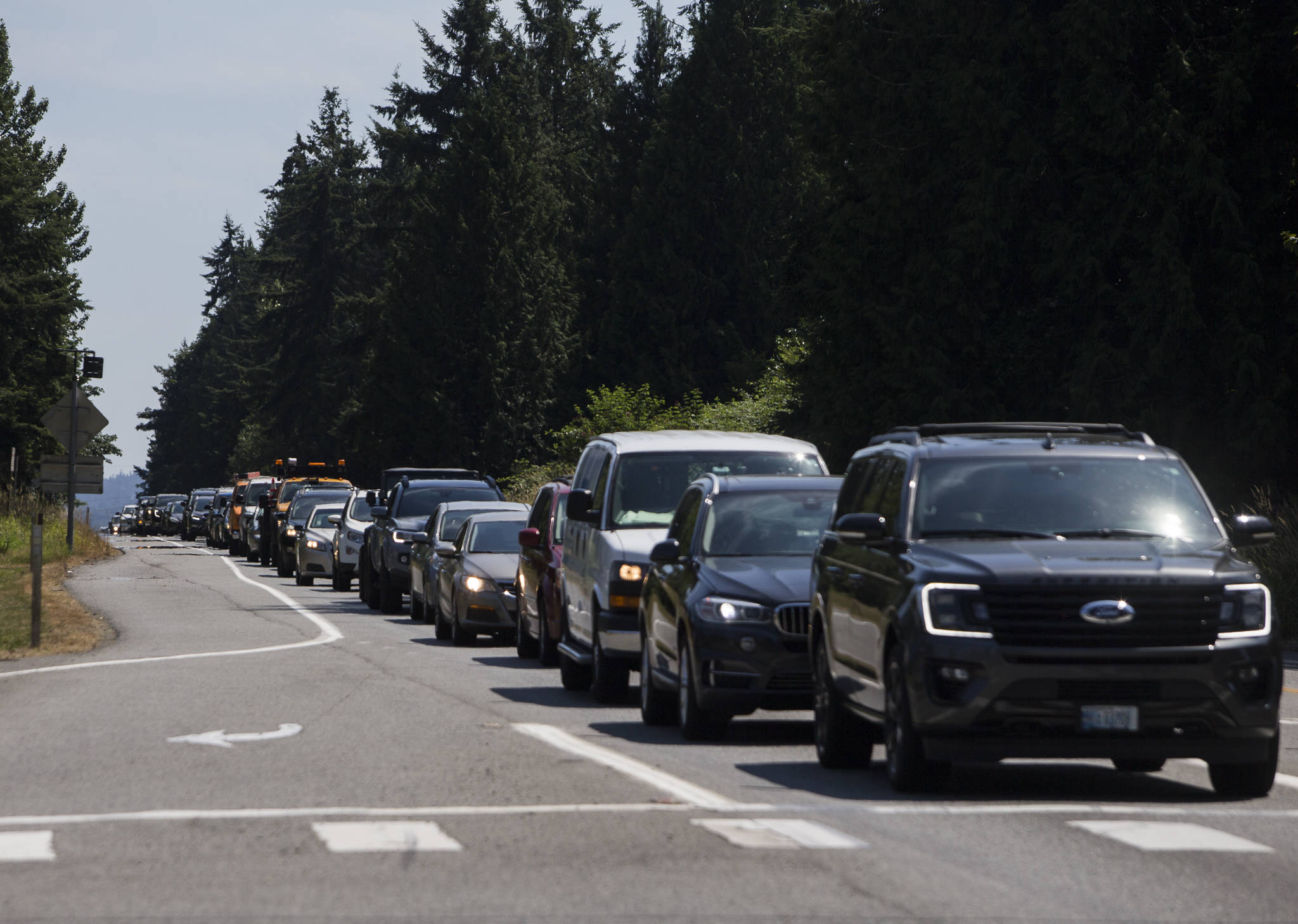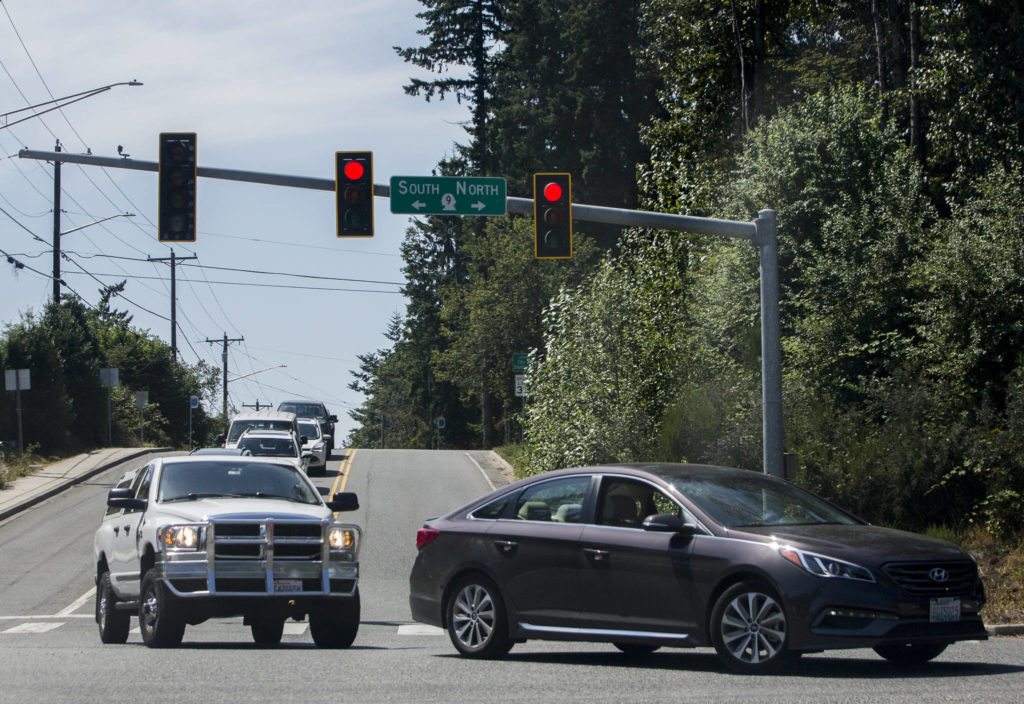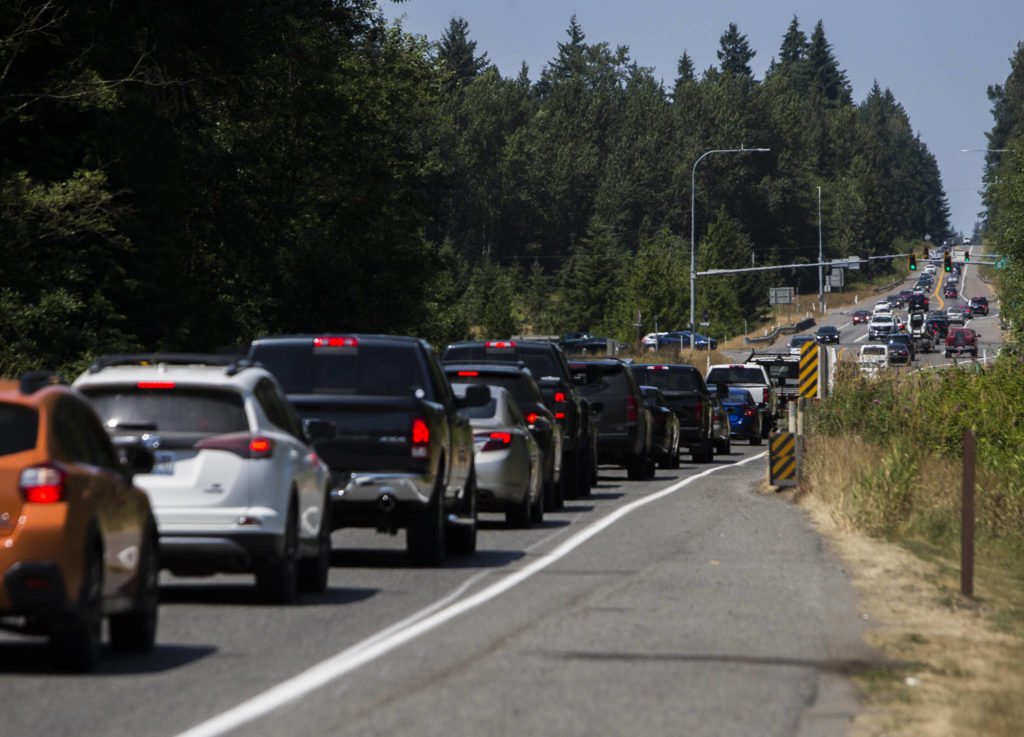The smell of fried food and grilled burgers hangs in the air, wafting out from the exhaust fans at King Charley’s Drive-In.
It’s a Snohomish County classic for fast bites and thick shakes along Highway 9 and 30th Street/John Jump Road.
Nearby, a different kind of exhaust spews from an annual daily average of 19,000 vehicles creeping and idling along Highway 9 in Snohomish during the morning and afternoon commutes.
Backups can cause drivers to try circumventing the north-south congestion via a circuitous route to 30th Street and then back on the highway. People who live in the area say that path probably doesn’t save much time, if any, and dumps more vehicles than the east-west road was meant to handle.
Clara Heirman, a longtime Snohomish resident, is frustrated with the excessive vehicles and drivers trying to take shortcuts, sometimes dangerously.
“It’s horrible,” she said. “I nearly got hit twice (by) people running the red light. It’s just a mess.”
Wendy Ermence Olin, another Snohomish resident, asked The Daily Herald about the intersection’s long waits, “several light cycles” during busy commute times, to turn left onto Highway 9.
“Isn’t there a way to adjust the lights to control the backup that keeps drivers from turning left even on a green arrow?” she wrote. “I’m sure I’m not the only frustrated driver facing this problem!”
The intersection is a known traffic chokepoint for the Washington State Department of Transportation staff. Backups and delays are common during peak periods because of the sheer volume of vehicles between 30th Street and the ramps at U.S. 2, WSDOT spokesman Jordan Longacre wrote in an email.
“The eastbound left and northbound through lane are the two competing movements that experiences the most delay for users,” he wrote. “For comparison, the northbound movement can take up to three cycles to clear the intersection and, similarly, the eastbound left turn can take two to three.”
Heirman is worried that drivers bypass Highway 9 traffic via 99th Avenue SE/Lake Avenue and turn onto the highway. She wants right turns to Highway 9 north restricted during the afternoon commute to keep people from looping off and back to the highway.
WSDOT has made a lot of changes to improve traffic flow through the U.S. 2 exchange, but prohibiting turns hasn’t been part of the package.
The state adjusted signal timing between the three connected signals at 30th Street and eastbound and westbound U.S. 2 ramps; installed flashing yellow arrows for the eastbound and westbound left turns, as well as the northbound and southbound left turns; added 250 feet to the eastbound left turn lane; and added a southbound right-turn drop lane.
A “Prepare to stop when flashing” sign lights up to alert northbound drivers of upcoming slowdowns caused by the traffic signal at 30th Street changing. It helps reduce rear-end crashes, Longacre wrote.
Where the highways meet, WSDOT added a left flashing yellow arrow to allow more vehicles at peak periods to drive onto eastbound U.S. 2. Highway 9 northbound drivers can reach westbound U.S. 2 with a flashing yellow arrow for left turns, as well.
“WSDOT will continue to monitor these improvements to determine their effectiveness and if further adjustments need to be made,” Longacre wrote. “Unfortunately, there are no quick fixes for this area and it will remain highly congested during peak periods. Much of the demand is related to growth in the area and limited transportation options for people to travel to where they want to be. Both WSDOT and the county will continue to look for additional opportunities as funding and resources allow.”
For now, that probably means sitting tight and enjoying the smells, if not the real deal, from King Charley’s.
Have a question? Call 425-339-3037 or email streetsmarts@heraldnet.com. Please include your first and last name and city of residence.
Talk to us
> Give us your news tips.
> Send us a letter to the editor.
> More Herald contact information.




























